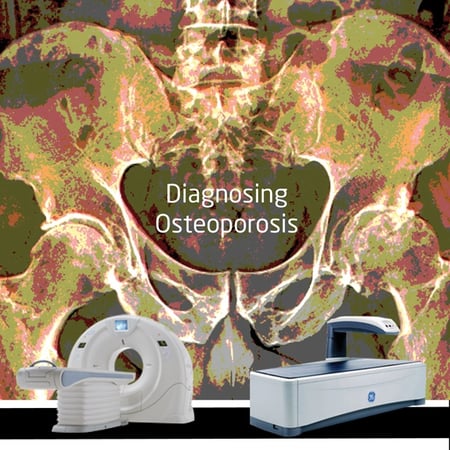With an average life expectancy of 84 years, American women spend roughly 50% of their adult life as a post menopausal female. And because estrogen decreases sharply when women reach menopause. it can cause bone loss, increasing the chance of developing osteoporosis dramatically. With the aging population expanding at an unprecedented rate and the number of fractures expected to rise, osteoporosis is and should be a major concern.
And because estrogen decreases sharply when women reach menopause. it can cause bone loss, increasing the chance of developing osteoporosis dramatically. With the aging population expanding at an unprecedented rate and the number of fractures expected to rise, osteoporosis is and should be a major concern.
A new study about the cost-effectiveness of virtual bone strength testing in Osteoporosis Screen Programs for postmenopausal women in the U.S. was recently published by RSNA. The study said the current standard for detection and diagnosis of osteoporosis, which is bone mineral density testing with dual-energy x-ray absorptiometry (DXA), isn’t effective in detecting patients who have weak done. However, according to co-author Balgrist University Hospital radiologist Christoph A. Agten, a screening strategy combining DXA scans with virtual bone strength testing may provide better detection without increasing overall costs.
The study found that the most cost-effective osteoporosis screening strategy combined DXA scanning and quantitative CT beginning at age 55, with a follow-up quantitative CT scan every five years. This strategy reduced the lifetime risk of hip fracture to 12.8 percent of one million patients, compared to 18.7 percent for women who didn’t undergo screening and 15.8 percent in screening with DXA by itself.
Three different strategies were compared for the study: no screening, screening with DXA with rescreening based on T scores and a combination of quantitative CT and DXA at either age 55 or 65, and using 3, 5 or 10 year intervals.
This testing method would cost 10-12 times more than using DXA alone but Dr. Agten believes it could ultimately save money by preventing future fractures.
Agten said additional prospective clinical trials are needed for newer techniques, such as quantitative MRI and CT. He’s hopeful that his study will inspire additional research and that other radiologists will consider pursuing cost-effectiveness analyses on newer imaging techniques.
Dr. Chang, senior author of the study, hopes that osteoporosis will one day be treated more like a cardiovascular disease. He’d like patients to undergo a personalized panel of diagnostic tests, including more costly options for patients with risk factor profiles that place them in greater danger.
At Atlantis Worldwide, we’re very excited about the results of this study and how it will possibly affect diagnosis for osteoporosis for post menopausal women. If you are in the market for refurbished or used medical imaging equipment with great warranties, please Contact One of Our Experts Today!
Some blogs you may have missed:
Meet the author: Vikki Harmonay




